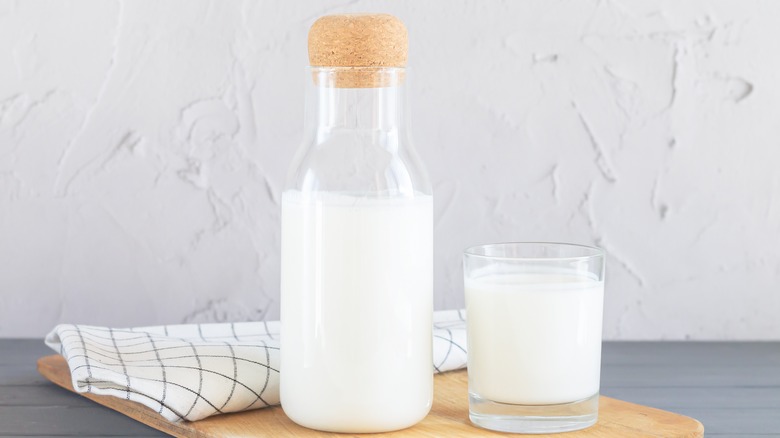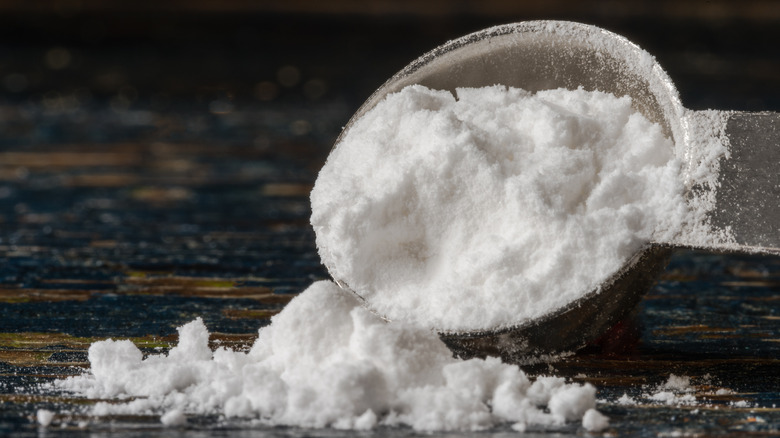What Happens When You Mix Cream Of Tartar And Milk?
Cooking is one big lesson in chemistry. Every chicken thigh that you roast, loaf of bread that you proof, or head of cabbage that you ferment involves an extraordinary series of chemical reactions. Understanding why ingredients behave the way they do can help successfully execute culinary projects. Boasting this scientific know-how can even simplify puzzling problems, like determining viable ingredient substitutions. It's for this reason that knowing how ingredients like cream of tartar and milk interact with one another is so important.
Forgetting an ingredient has happened to all of us. Thankfully, unless you're missing something major, a swap can be made. But, while you might be familiar with effortlessly replacing flavoring agents, some substitutions prove trickier. For complex ingredients like buttermilk that serve all sorts of purposes from helping to bind and leaven baked goods to tenderizing meat, a suitable swap requires some thought and a touch of chemistry.
Given its composition, the ideal buttermilk replacement should be creamy yet textured and have a vibrantly tangy flavor. Rather than lean on just one ingredient, combining two pantry staples like cream of tartar and milk (that each recall a different element of buttermilk) is wise. Essentially, what makes this duo so effective is that the highly acidic nature of cream of tartar is able to acidify neutral-veering dairy. As the powder is added to milk, proteins start to unravel, triggering the milk to curdle and producing a liquid that's strikingly similar to buttermilk.
How to replace buttermilk with cream of tartar and milk
Cream of tartar and milk can produce a pretty sound buttermilk replacement in a pinch. Ensure that your cream of tartar hasn't been sitting idly in your pantry for decades. While it doesn't actually expire, the powder does lose some of its strength after a few years. Likewise, use dairy milk, preferably full-fat options. A non-negotiable, dairy is exactly what's needed to encourage "souring."
As for the right ratio of ingredients to craft a successful buttermilk replacement, the process is as easy as mixing 1 ¾ teaspoons of powder for every cup of milk used. Depending on how cakey the powder is, it might be wise to create a slurry with some of the milk before totally whisking the ingredients together. Otherwise, whisk vigorously until combined, leaving the mixture to rest for several minutes before incorporating the tart liquid into your intended recipe.
Cream of tartar and milk make a great swap for buttermilk, but if you do notice any minor changes in taste, texture, or aesthetics, remember that this comes with the territory of substitutions. After all, it's rare to find a perfect replacement for any ingredient, let alone buttermilk — that is, unless you happen to have buttermilk powder on hand.

